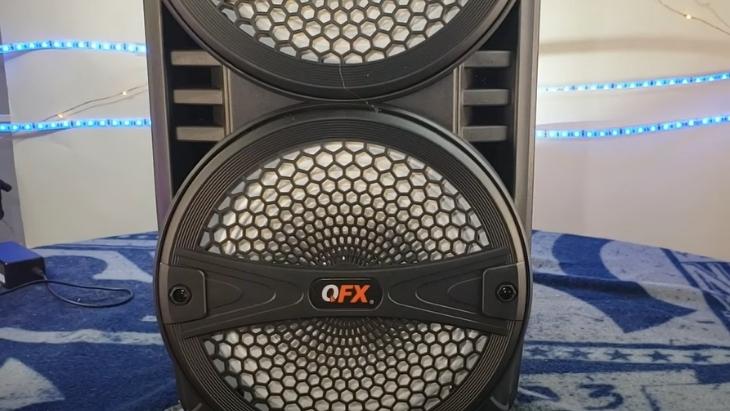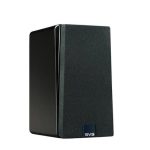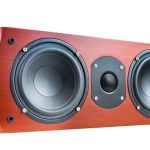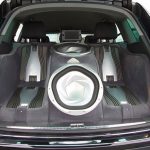If you’ve recently bought the QFX speakers, you might not expect them to fail.
As you looked through the online reviews and met the convincing seller, you knew you got a good deal.
But the speaker’s sound is distorted, you have no bass or treble, and popping sounds are common.
Don’t fret. You can have the best speakers in the world, but as with any electronic device, some common problems can occur with speakers.
But this doesn’t downgrade the quality of your QFX speakers—every rose has its thorn.
So, here’s a complete list of the most common problems of QFX speakers and how to fix them. But first,
What Are QFX Speakers?
QFX is an excellent brand name in the field of audio. They have a wide range of products such as Bluetooth speakers, home theatre surrounds sound speakers, home audio and stereo speaker systems, portable and personal audio, and retro electronics with audio or video accessories.
These audio systems are great for parties, family gatherings, camping, and even relaxing at home. They have a sleek design and look good anywhere in your house. You can use them indoors or out.
Besides, they are compatible with Apple devices and Android phones. QFX speakers include cabinet speakers, liquid motion, karaoke and projectors, small speakers, large speakers, and liquid crystals.
7 Most Common Problems of QFX Speakers And Their Solutions
While QFX speakers are durable, they may have several functional issues.
Here are common problems that can occur with speakers and how to fix QFX speakers:
1. No Sound at All
The first thing you’ll notice with your speakers is whether there is any sound coming from the speakers.
No sound means: either your speakers are blown, or something is wrong with your stereo system.
With broken speakers, it will be necessary to replace them before proceeding with further testing. But an issue with your stereo system requires troubleshooting this problem before proceeding further with repair work on the system itself.
If you have tried everything else and no sound comes from your QFX speakers,
- Check if the speaker wires plugs are in the correct port.
- Make sure that the power cables are connected to the wall socket correctly.
- You should also check that the cable attached to your speaker(s) is working correctly by testing it with another device or by unplugging one end from your computer and plugging it into a different one.
- Check if the speakers are mute. You might fumble for lots of answers, yet your speakers are quiet, and all you need is to unmute them!
2. Loud Crackling Noise
Crackling sounds are destructing. Listening and hearing a crackling sound in your music could mean the amplifier’s volume control is too high.
- Try lowering the volume until you hear only a faint crackle. If you still hear loud crackles, try adjusting the gain control.
Also, crackling sounds may be because of a bad connection or non-functional cables. To handle this:
- Reboot your system
- Check whether your wires are working or spoilt by connecting a different audio system.
3. Popping Noises
Popping sounds are a result of static electricity buildup. Ensure you do not touch any metal objects while using the QFX speakers. Metals cause interference in the speakers.
Sound production is complete when electrical energy, which is in the form of audio signals, is successfully converted to mechanical energy, which is sound energy. An interruption of the electrical current causes the popping sound.
4. Sound Distortion
When the sound quality distorts, the audio signal is high. To fix this problem, adjust the volume control to its lowest setting. You may also need to replace the amplifier module.
Moreover, distorted sound means the balance, tone, and volume control are not set correctly—try changing them. You can also play from a different source. For instance, if it was radio, try a CD.
And you can test the speaker wires on a different sound system to ensure they are not the ones causing the distortion.
5. Poor Bass Performance
While bass music appeals to many, it’s damaging to most speakers. Some reasons for lack of bass or treble include:
- Placement of speakers. Ensure your speakers are not against the wall. It distorts the bass performance.
- Also, some wires might have fallen off, causing the bass to go low. Check to ensure all the cables are perfectly fit.
- As you increase your speaker’s volume to abnormally high levels, any other quality issues in your speaker’s augment. Try toning down your volume to enjoy quality music.
- When using an external music source like your computer, check whether their settings accommodate the bass and treble sounds. Sometimes the problem is wrong settings on your source.
The QFX speakers have a design that enables them to produce deep bass tones.
However, if the bass is weak even after the above adjustments, it might be due to a faulty amplifier module. In this case, you should contact the QFX manufacturer for replacement.
6. Bluetooth Speaker Stops Charging
So, you have been using your Bluetooth speakers for some time, but they recently stopped charging.
What could be the problem? QFX Bluetooth speakers such as the PBX-61081BT take about 8-12 hours to charge completely. And you can use it while it is charging. So, connect your charger to a source of power.
It doesn’t mean your speaker is ruined when it fails to charge. Check your USB cable. It could be spoilt.
Try using another USB cable and see whether it charges. If it still fails, then your batteries could be spoilt. Replace them and charge.
Always ensure to unplug the speaker from power when charging completes. Overcharging is a cause of spoilt batteries.
Read your manual keenly to learn how to charge the QFX speaker to avoid a repeat of Bluetooth failing to charge.
7. Low Volume
When speakers constantly have a low volume, it could mean:
- Both the source and the device have low volume. To increase the volume, turn the volume knob clockwise. If you still cannot hear anything, then it could be that the amplifier module is defective. In this case, we recommend replacing it.
- The source of your music could be mute or not playing at all. Check and correct it.
- The music software on your source is not updated. Work on updating the software and see whether the volume is okay.
Other Common QFX Speaker Problems
- The speaker will not turn on or off. Maybe the charge is too low, the cables are unplugged, or the speaker is blown. Check any of this and contact the manufacturer if you keep experiencing this.
- The Bluetooth speaker fails to connect to a paired device. If this happens, try pairing the two devices again but first delete the Bluetooth information on the source.
- The speakers on the source, i.e., the laptop, play but not through the QFX speakers. In this case, check your computer settings to see the default speakers. Sometimes you may have the computer as your default speaker, making the QFX-connected speakers useless.
Conclusion
Speakers sometimes develop problems, some of which do not require a professional. You can fix them on your own. Now the issues of QFX speakers have been clearly defined. Read through, and you’ll no longer scratch your head at every pop or crackle.
Michael Evanchuk is a San Francisco-based sound engineer with 20 years’ experience installing, troubleshooting, and repairing commercial, automotive, and household sound equipment. Evanchuk owns an auto stereo center, where he offers highly competitive car audio installation and repair services. He has written dozens of articles on different sound engineering topics, all of which have been published in leading journals, blogs, and websites.





